This article explores the history of the legal rights of herbalists to practise, and looks particularly at the use of medicinal plants in wartime Britain.
In 1512, under the rule of Henry VIII, an Act was passed that became known as the Herbalists’ Charter. It stated that:
…it shall be lawful to every person being the King’s subject, having knowledge and experience of Herbs, Roots and Waters, or of operation of same, by speculation or practice of any part…of the King’s dominions, to practise, use and administer in and to any outward sore, uncome, wound, apostemations, outward swelling and disease, any herbs or herbs, oyntments, baths, pultes, and amplaisters, according to their cunning, experience and knowledge in any of the diseases, sores and maladies before-said, and all other like to the same, or drinks for the Stone and Strangury, or Agues, without suit, vexation, trouble, penalty or loss of the goods.
This Act legalised herbalists, and implies that herbal medicine still flourished at that time, that a very wide range of diseases (some of which were life-threatening) could be treated by these practitioners, and that they had friends in high places. It has also provided, as Barbara Griggs writes in her excellent book ‘Green Pharmacy, a history of herbal medicine’, a flimsy legal roof under which (the profession of herbal medicine) has sheltered and flourished to this day in Britain.
300 years later, and less than a century ago, we in Britain were to depend once again almost totally on homegrown herbs for all our healthcare needs.
The documentation of the use of herbs in Britain in the two World Wars reminds us that we still have our own medicinal resources here in the UK. In the context of self sufficiency and valuing our own resources, and more recently against the backdrop of issues of food security and the threat of leaving the EU (perhaps causing problems with the supply of medicinal products from abroad), I am fascinated by what was grown, harvested and used during WWI and II.
Of course the situation is very different now, with the expansion of the synthetic (chemical) drugs industry and market, but it is interesting to examine what happened at that time, and look at what was used, and what was effective.
One of the strongest advocates of plant based medicines, Ada Teetgen said in ‘Profitable Herb Growing’ 1916:
Some people think that herbalism is a quack or empirical system of medicine unworthy of support or perpetuation. They believe it to be an issue of mere ‘old wives lore’ and superstition. They are not aware, perhaps, that modern pharmaceutical research has vindicated the reputation of many an olden ‘simple’.
Botany, was at last being taught as subject in its own right in British universities in the late 19th century, but dissociated itself from herbalism, as had medicine. The use of herbs in the WWI and II focused interest on the study of medicinal plants.
At the outbreak of WWI in 1914, for a wide range of reasons, fewer herbs were grown here and used by the general population, and what was used was imported from (and often also processed) abroad. Supply lines of the raw herb, and what synthetic drugs were newly available, were cut. Even herbs that were grown in our Colonies and by our Allies were affected, such as Opium (source of morphine), ajowan (for thymol) and chincona (for quinine), as Germany dominated the pharmaceutical industry, controlling 80% of the world’s output at this time. Foxglove, belladonna, aconite, henbane, even dandelion and nettle were imported from or via Germany and her Allies. With 2/3 of our food being imported (under very difficult circumstances) at this time, there was little room for the importation of the raw herbs for drugs. We also lagged behind in the skills to manufacture the newer drugs (eg aspirin) being derived from plants (morphine, heroin, and codeine were all developed and marketed by german companies eg Merck and Bayer). World prices for raw herbs increased.
These were all incentives for home growing herbs. Unfortunately, by 1914 there were only 8 herbs farms left in the UK due in part to competition from eastern Europe. The Board of agriculture identified which herbs were needed, how much and the capacity of growers to meet these needs. These included belladonna ( atropine for eye operations, as an antidote to organophosphorus gas poisoning); henbane (hyoscyamine as a tranquilliser for shellshock and for seasickness); thorn apple / datura (stramonium especially for asthma and sickness);autumn crocus (colchicine for inflammation); foxglove (digoxin for poor heart function) and valerian (anxiety and insomnia).

Henbane.
Another vital herb, Opium poppy, was essential for its painkilling heroin and morphine, and opium was imported via a special licence from Turkey via neutral countries, thus maintaining supplies throughout the war.
Some of these were cultivated and some wild harvested. The list was similar in both world wars. The Women’s Farm and Garden Union formed the National Herb Growing Association in 1916, and by 1917 most of the needs were met, demonstrating the value of home production and the importance of self sufficiency.
Landowners were encouraged to use land for herb growing, although some objected to the collection of foxglove leaves on their land after June 15th due to the possible disturbance of game bird cover. Women, children, and men unfit for active service were enlisted to cultivate and harvest herbs.
Cadburys helped with improving drying facilities for freshly harvested herbs, as this was a major issue. Maud Grieves, who founded her herb school in 1905, gave practical tuition in growing, drying, marketing of herbs and her instructional pamphlets were to form her fantastic book ‘A Modern Herbal’, published in 1931.
Sphagnum moss (the peasant’s bandage’) was collected from remote parts of Scotland, cleaned and packed and sent to be used as surgical dressings. It is naturally antiseptic, and was more effective than cotton wool (which was in short supply as it was utilised in explosive manufacture) as it was capable of absorbing up to 20x its own weight of fluids. Thymol was added, to make it even more antiseptic, and also garlic.
The high rate of wound infections in the trenches in WWI made antiseptics a crucial part of wound dressing and surgery.
Carbolic acid, from coal tar manufacture, was used as an antiseptic but was very caustic to body tissue. In 1914 salicylic acid and thymol (a natural product, 25 x more effective and less caustic to tissue, derived from ajowan seed) were useful alternatives, but made in or imported via Germany. Ajowan seed, grown in India but traded via Germany, can also be extracted from a type of basil and thyme, but not in such great quantities. Alternative sources weren’t very successful, and other chemicals to control infection were developed It was however still used for colds, catarrh, and worms in the trenches and was a constituent of ‘Listerine’.
Malaria was another huge challenge – then still rife in Asia, Africa and Southern Europe. In 1915 nearly 20% of the troops at Gallipoli were evacuated due to sickness (mainly malaria). In the last 6 months of 1916 in East Africa, 51,000 British troops were hospitalised due to malaria, and in the 1915-17 in the Balkans, nearly half of the troops were unfit for service for the same reason. The problem was even worse in WWII. The role of quinine (from the Chincona tree) was crucial in the treatment, and all our supplies came from Java, where it had been grown from seeds collected in Bolivia under the direction of Charles Ledger. Both sides suffered from interruption of their supply lines eg ours when Japan invaded Indonesia. It was estimated that more US troops died from malaria than from fighting the Japanese in the Pacific region.

Opium poppy.
Between the wars, driven by economics, we started to rely on imports again. The NHGA was disbanded in 1918. There was a rise in the production of synthetic versions of plants, prompted by the issues of supply and associated costs. Some of these eg antimalarial atrabine, a spin off from research into the dye industry, had many unpleasant effects.
However, when WWII started, Kew Gardens was asked to coordinated vital drug supplies, and this time it was better organised, with growing and harvesting informed by the latest scientific knowledge of ecology and physiology. By 1942, 70 county medicinal herb committees of the WI were formed, and films and leaflets produced informing people how to gather and process herbs such as foxglove leaves. Issues such as correct ID, sustainable collection, and drying methods were addressed. At this time the Oxford Medical Plants Scheme did much useful research about optimum cultivation and processing techniques regarding alkaloid levels in Solanaceous plants.
Meanwhile, an army of volunteers was mobilised to collect rosehips, conkers, broom tops (for high blood pressure), nettle (for the extractable chlorophyll for anti-asthma drugs, and for dyes for camouflage), sphagnum (for wound dressings), and many others. More reships and conkers were collected than any of the herbs. Rosehips were collected for their vitamin C content, as the Ministry of Health was concerned about children getting enough of this, due to the lack of citrus imports; and conkers for the glucose and acetone that can be prepared from them. In 1943 the collection of 500 tons of rosehips saved the import of 25 million oranges. Bilberry, blackcurrants and sea buckthorn were also good sources of the vitamin. As for conkers, they were useful for cattle feed, soap manufacture and starch. 1500 tons were collected in 1942. In WWI, demand had been even greater, as they were used in the manufacture of the anaesthetic chloroform and the explosive, cordite.
The effect of the world wars on the development of a huge drug industry is too complex to explore here (see Barbara Griggs’ book for more info). Emotional, professional, economic, and hubris of a scientific generation were all factors that propelled the development of our modern day ‘big pharma’.
‘The desertion of vegetable drugs soon became almost complete’ wrote a pharmacologist in Science in 1941. US pharma saw the business opportunities – huge investment was needed (the Pure Food and Drug Act of 1906 required rigorous trials) and plant research was unlikely to result in product that could be patented and profitably marketed. They couldn’t risk finding that the plant was more effective, cheaper and safer than a drug. Foxglove for example, used as a whole leaf preparation, is still considered by some doctors, to be safer than the extracted alkaloids.
Even when a plant offers real hope to a major medical problem, such as oil of garlic, which in 1918 was shown ( by Minchin) in trials to be more effective than any other antiseptic and known therapy , even active against TB and diphtheria, it is ignored.
But the revival of interest in herbs outlasted the war in some quarters.
Hilda Leyel founded the Society of Herbalists in 1927, and fought for the recognition of qualified herbals practitioners. In 1933 in Germany, where folk culture/culture was revered, a law was passed granting naturopaths and herbalists status equal to doctors.

Rosehips.
In the UK, there were many divisions within the herbal associations and in 1941, the government (with many regular doctors in its ranks) was pressured by pharmacists to pass the 1941 Pharmacy and Medicines Act. This removed the right of herbalists to supply medicines to the public (other than dried herbs and proprietary medicines), and thus herbalists became illegal practitioners overnight. Medical Herbalists were not consulted over the preparation of the Bill (unlike pharmacists and even grocers), and the power to inspect and prosecute Herbalists for breaches of the Act were given to the Pharmaceutical Association. It wasn’t until the 1968 Medicines Act that Herbalists had some of their rights restored (although some of these were revoked in 2011). The constant battle for recognition and the right to practice continues.
Today, many countries still rely on traditional herbal medicine as their primary form of healthcare (WHO stats say 80%). Reasons cited are cost, ideological, concerns about adverse effects of synthetic chemicals, desire for more personalised healthcare, and a greater degree of public access to health information. Herbs are used primarily for health promotion and therapy for chronic conditions. Traditional medicine tends to be used when conventional medicine is ineffective, and in the face of new infectious diseases (e.g. the use of herbs decreased in Britain when new legislation on Public health and sanitation in 1880’s led to fewer outbreaks of the killer diseases that herbs treated so well, compared to the calomel and bleeding of regular doctors) .
Herbs are still the source of vitally important pharmaceutical drugs today. Opium poppy, foxglove, autumn crocus, valerian, artemisia annua, belladonna, henbane and datura are all still the source of much used drugs.
Traditional herbal medicine continues to be safe and effective. It is located in the community, the provenance is easily demonstrated, the carbon footprint light, the skills and local knowledge for ID, collection and processing are available, the quality of the freshly harvested herb is high, the native forms and the local flora may be the best for us, it benefits the local economy, and conserves and enhances the local biodiversity and natural environment.
It seems incredible that this period of history, when we relied on herbs to such an extent, and all these factors came to the fore and were crucially important, should be within living memory of some of us. Hopefully we can reflect and learn from our experience.

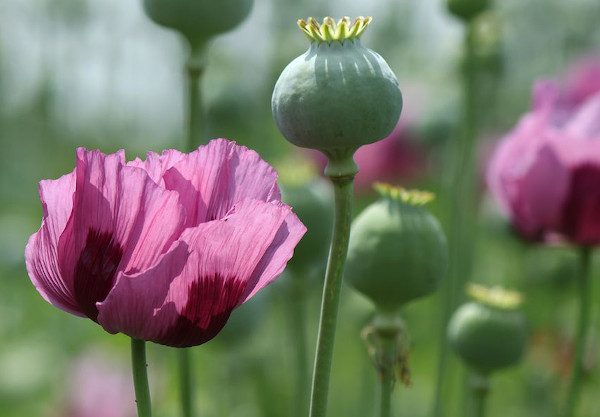
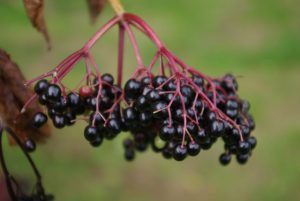
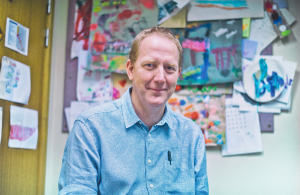

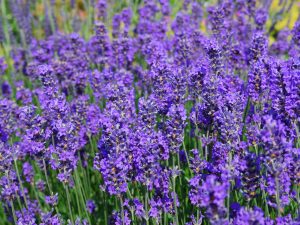
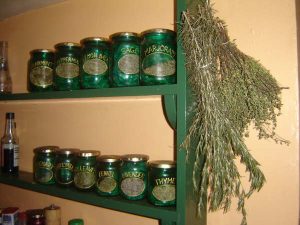
7 Comments
Some while ago, Mr Nortey-Mensah of WWOOF Togo commented that, in Africa, most people would never be able to afford the products of Western nations’ drug companies; and that it behoved everyone to learn to grow in their own gardens the remedies that would help with common ailments.
Fascinating dive into the history of medicinal plants! 🌿📜 It’s amazing to see how ancient civilizations relied on nature for healing. Thanks for this insightful journey through time and the roots of herbal remedies. Nature’s pharmacy has quite a story! Refer to this related site https://www.greenlifeclinics.com.au/
Very interesting read that provides more context for the current landscape. It seems like we are finally seeing some more headway in the medical industry, with many modern pharmacies expanding their practices to include Plant Based Alternative Medicines. Will be interesting to see what happens in the next 20 years in this industry.
Very interesting read that provides more context for the current landscape. It seems like we are finally seeing some more headway in the medical industry, with many modern pharmacies expanding their practices to include Plant Based Alternative Medicines. Will be interesting to see what happens in the next 20 years in this industry.
A great deep dive on the history of medicinal plants, and the rights of individuals to use them. Especially insightful given the current trend towards less traditional Plant Based Medicines in the pharmaceutical industry. Nice to remember that plants have always been there to help us <3
very honest person who believe in nature and i also believed that there could be cure somewhere in the world, I kept my faith so strong and kept on doing my research till i finally came across Dr Osaka from west Africa He is one of the oldest herbalist after Dr. Sebi and total am a living testimony to his herbal cure to herpes, i became herpes Negative on the 17/05/2021 after using the herbal medication Dr Osaka mailed to me along with the prescriptions and today its been 2 years and herpes is not traceable in my body system, All thanks To herbalist Dr Osaka For More Info on how to get cured Contact +2349024827182
or Email:[email protected]
https://www.facebook.com/profile.php?id=61555715966259
https://drosakaherbalhome9.wixsite.com/doctor-osaka
Its interesting to understand the ancient use of medicinal plants! 🌿📜 It’s amazing to see how our ancestors used plants for medicinal purposes . I appreciate going through the time and the roots of herbal remedies. Natural Greens has quite a story! Refer to this related site https://naturalgreendispensary.com/